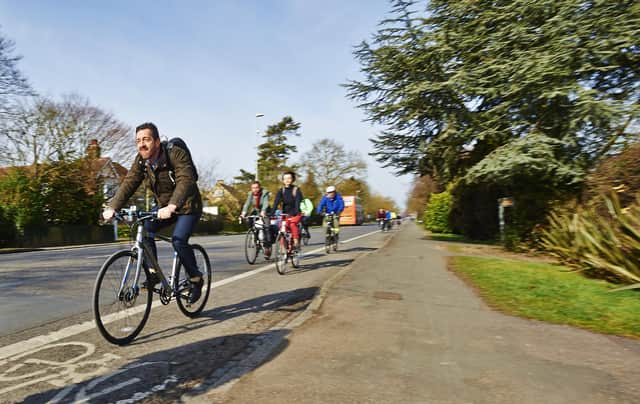Covid-19 offers unique chance to reallocate road space - Alastair Dalton


Today’s roads were originally tracks which people walked on, then drove over in horses and carts, and later pedalled along on bicycles.
It was not until decades later that motor vehicles became part of the traffic – and soon became synonymous with that word.
Advertisement
Hide AdAdvertisement
Hide AdPretty much ever since, after congestion, pollution and crashes kicked in, people have been grappling with the problem of how to turn back the tide.
While a role for cars is widely accepted, their dominance has come to be increasingly questioned, especially in Scotland’s cities.
The convenience they provide is becoming outweighed by the problems they cause.
But up to now, only tentative steps to redress the balance have been made.
The most radical plans, such as Britain-wide pay-as-you-go motoring or congestion charging in Edinburgh have been dropped by ministers or resoundingly rejected in a local referendum.
That was then, but this is now.
Completely changed Scottish travel patterns forced by the Covid-19 crisis have cut road traffic by at least three quarters.
Our streets have been turned back to the level of activity of perhaps a century ago or more.
Advertisement
Hide AdAdvertisement
Hide AdWhen I went out to our corner shop to buy food yesterday morning in Glasgow, more cycles than cars passed me – an extraordinary state of affairs.
I recall similar scenes last week while taking my daily exercise on a bike ride with my son.
Whole families were venturing out on variously-sized wheels in normally busy streets only regular cyclists would use.
The state of affairs offers us a unique opportunity – to significantly reallocate road space between vehicles, cycles and walkers.
Berlin and New Zealand are pioneering this with “pop-up” cycle lanes and widened pavements, and as The Scotsman revealed this week, Edinburgh and Glasgow city councils plan to follow suit, encouraged by transport secretary Michael Matheson.
Physical distancing – staying two metres apart from each other – looks set to become the new normal for many months to come, so everyone will need more space to get around.
Fear of infection
That indicates the planned changes are born of necessity, not some notion of creating a cycling utopia – even though there have been signs of a significant increase in cycling in various parts of Scotland.
But there is also the impetus of people’s ongoing fears of infection that are likely to make cycling and walking more attractive options for some than returning to public transport.
Advertisement
Hide AdAdvertisement
Hide AdBut that should not prompt any easing of restrictions on car travel, such as parking charges and availability, however tempting a switch to motoring from other modes might be for those fortunate to have access to a car.
Ministers have already recognised the need for segregated bike lanes to encourage more people to pedal – and that’s where the priority should be.
Send out a clear signal about who should come first. In the case of cycling, that’s simply a reflection of the Scottish Government’s own desired transport hierarchy.
More cyclists will have taken to the roads because there are far fewer cars about.
Seeing others doing the same will have encouraged them further.
It is that strength in numbers that we need to see continuing so cyclists are more visible to everyone on the road, spreading the word that riding is a safe and viable way of getting about.
A message from the Editor:
Thank you for reading this story on our website.
While I have your attention, I also have an important request to make of you.
With the coronavirus lockdown having a major impact on many of our advertisers - and consequently the revenue we receive - we are more reliant than ever on you taking out a digital subscription.
Advertisement
Hide AdAdvertisement
Hide AdSubscribe to scotsman.com and enjoy unlimited access to Scottish news and information online and on our app.
With a digital subscription, you can read more than 5 articles, see fewer ads, enjoy faster load times, and get access to exclusive newsletters and content.
Visit https://www.scotsman.com/subscriptions now to sign up.
Our journalism costs money and we rely on advertising, print and digital revenues to help to support them.
By supporting us, we are able to support you in providing trusted, fact-checked content for this website.
Frank O'Donnell
Editorial Director
Comments
Want to join the conversation? Please or to comment on this article.